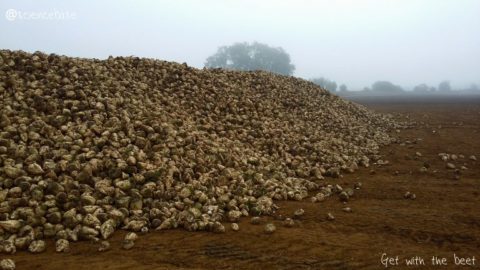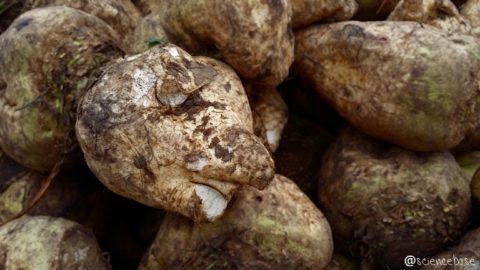Forget season of mists and mellow fruitfulness…round these ‘ere parts it’s the season of sugarbeet mountains. Local farm just harvested 200 acres of these root vegetables and they’re sitting in a massive heap at the edge of a field waiting to be loaded up on to 30-tonners and dispatched to the sugar works at either Bury St Edmunds in Suffolk or Wissington in Norfolk, apparently; the latter being the biggest sugar refinery in the UK.

Roughly speaking, the mound of sugarbeets was basically a truncated cone with a base of approximately 30-40 metres diameter and about 3 metres high, at a quick guess 1500 cubic metres. As a guess, they’d pack in the heap at 100 beets per cubic metre…so that’s a pile of maybe 150,000 or so, 1 kilo each, 150 tonnes…so 50 lorry loads. Sound about right?
Ironically, given their name, sugarbeet aren’t particularly rich in sugar (compared to sugar cane), at least according to a couple in a Range Rover on the farm whom I probed to find out more about this sweet mountain. I’d assumed that 20 beets were needed to make a kilo bag of sugar, the woman reckoned two or three times that. So, that mountain would be refined to 3000 bags…with the residue being used as a bulking agent for livestock food.

We’d need tens of thousands of sugarbeet farmers to sate our sweet tooth, but imported sugarcane is about 90% of our sugar supply. The beet balance is probably a few thousand farms averaging 200-acres, although obviously some will be bigger and some smaller. British Sugar says there are actually 4000 farms producing 8 million tonnes of sugarbeet annually. So my Fermi calculation wasn’t too far off, I don’t think…feel free to correct my agricultural assumptions.